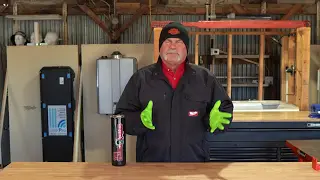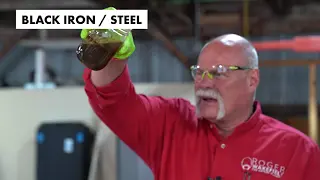Have you ever been tempted by a so-called quick fix for a slab leak? In this post, we’ll explore a product called AquaP and show you why it may be more “too good to be true” than a real solution. We’ll also discuss the right ways to address serious plumbing issues and how choosing a short-cut product could end up costing more in the long run.
Why “Miracle” Leak Fixes Raise Red Flags
Too Good to Be True
Whenever you hear about an “instant fix” for under-slab or in-wall leaks, it’s wise to approach with caution. If the repair was truly that simple, why would professional plumbers invest in tools, training, and years of experience?
The Risk of Hidden Damage
Temporary sealants or epoxy-based inserts may appear to work momentarily, but you risk creating future problems in your water line. Loose epoxy or plastic “beads” can migrate through your system, clog faucets, and cause more damage down the road.
Testing AquaP in the Field
The Setup
To demonstrate how AquaP actually behaves, I replicated a real-world leak scenario. I drilled holes in half-inch and one-inch pipes, filled them with water, and introduced the AquaP product as recommended.
The Initial Reaction
In some cases, it momentarily seemed to slow the leak. However, as soon as full pressure resumed or water flowed more aggressively, the epoxy “plug” dislodged. One test showed it plugging the hole briefly—until higher pressure blew it right back out.
The Bigger Problem
Even if AquaP or any similar product seals a leak for a moment, that material is still floating in your plumbing system. The next time you run a faucet or use an appliance, chunks of epoxy could clog a fixture. Worse, it may just relocate the leak or cause additional blockages elsewhere.
The Proper Ways to Fix Slab Leaks
Locate and Repair Directly
The professional approach often involves leak detection equipment to find the exact leak location. Then, the plumber can either:
- Jackhammer or cut into the floor for direct access
- Tunnel under the slab to avoid damaging inside floors
- Reroute overhead in certain situations, especially if you use modern piping like PEX
Why These Methods Work
Professional repairs come with pressure testing, code compliance, and the assurance that no stray materials will end up in your pipes. Yes, it takes more skill, time, and expense. However, you gain a durable, code-approved fix that won’t surprise you with future clogs or renewed leaks.
Red Flags with “Rat Boys” or Scam Tactics
- High-pressure sales insisting they have a secret solution
- Refusal to show code-compliant methods
- Badmouthing reliable, proven repairs as “too expensive” or “unnecessary”
When it comes to your home’s plumbing, shortcuts are rarely beneficial. A real plumber will walk you through the diagnosis, show you the evidence of your leak, and outline all the viable solutions.
Conclusion
Slab leaks are serious business—don’t gamble on products that promise “miracle” fixes. As demonstrated in our AquaP test, quick fixes often fail under real water pressure. Invest in professional leak detection and code-approved repairs to ensure your home remains safe and leak-free for the long haul.




